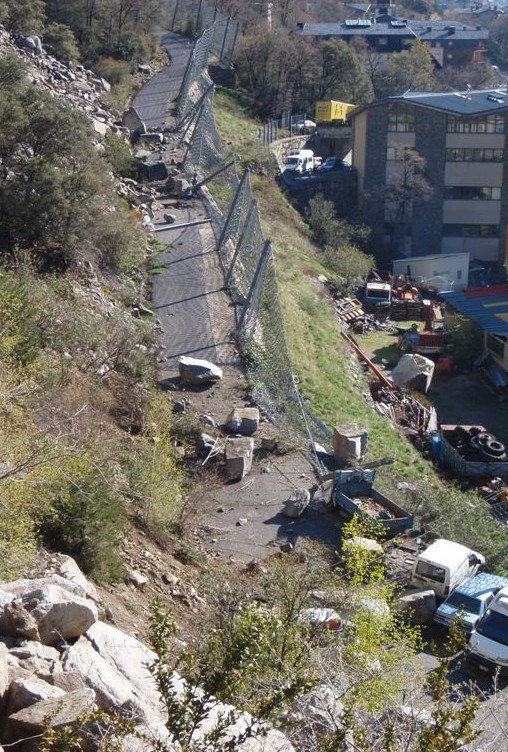Rockrisk project

Rockfalls are frequent instability processes in road cuts, open pit mines and quarries, steep slopes and cliffs.
Even though the stability of rock slopes can be determined using analytical approaches, the assessment of large rock cliffs require simplifying assumptions due to the difficulty of working with a large amount of joints, the scattering of both the orientations and strength parameters. The attitude and persistency of joints within the rock mass define the size of kinematically unstable rock volumes. Furthermore the rock block will eventually split in several fragments during its propagation downhill due its impact with the ground surface.
Knowledge of the size, energy, trajectory... of each block resulting from fragmentation is critical in determining the vulnerability of buildings and protection structures.The first objective of the project is the characterization of rocky slopes fracture's patterns so as to obtain the distribution of potentially unstable volumes ant its breakage probability. The analysis of the fragmentation process of rockfalls during its propagation downslope is also essential to simulate rockfall trajectories in order to evaluate impacting energies.

- Objective 1: Definition of potential volumes of breakage in rocky slopes.
- Objective 2: Determining fragmentation of rock masses and their integration into propagation analysis.
- Objective 3: Rockfall quantitative risk assessment (QRA): Vulnerability of buildings subjected to rockfall impacts


Share: